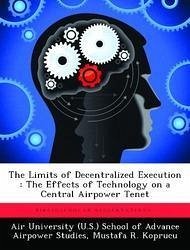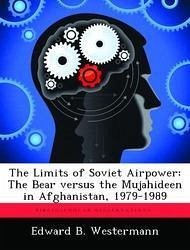Nicht lieferbar

The Limits of Decentralized Execution: The Effects of Technology on a Central Airpower Tenet
Versandkostenfrei!
Nicht lieferbar
This thesis investigates the effects of technological advances on decentralized execution of air operations. It specifically seeks to answer the question of how advanced sensor and communication capabilities in Air Operations Centers might lead to centralized execution.The research focuses on three case studies of air operations: Linebacker II, Desert Storm, and Allied Force. In each case the command-and-control structure for air operations is analyzed, the command-and-control systems are described, the technologies enabling the air commanders headquarters to maintain real-time control of his ...
This thesis investigates the effects of technological advances on decentralized execution of air operations. It specifically seeks to answer the question of how advanced sensor and communication capabilities in Air Operations Centers might lead to centralized execution.The research focuses on three case studies of air operations: Linebacker II, Desert Storm, and Allied Force. In each case the command-and-control structure for air operations is analyzed, the command-and-control systems are described, the technologies enabling the air commanders headquarters to maintain real-time control of his forces are evaluated; and the influence of all these factors on decentralized execution are assessed.The study concludes that technological advances in Air Operations Centers' ability to receive real-time information on on-going air missions and situational displays that give it detailed information on local conditions in the battle area, combined with a concurrent capability to communicate with strike aircraft, makes centralized execution feasible. Under certain conditions of limited force application with a high degree of political control, centralized execution may also become desirable.Finally, the implications of these technological advances for future Air Operations Centers, which have been designated by the USAF as weapons systems, are discussed within the context of enabling information superiority. This work has been selected by scholars as being culturally important, and is part of the knowledge base of civilization as we know it. This work was reproduced from the original artifact, and remains as true to the original work as possible. Therefore, you will see the original copyright references, library stamps (as most of these works have been housed in our most important libraries around the world), and other notations in the work. This work is in the public domain in the United States of America, and possibly other nations. Within the United States, you may freely copy and distribute this work, as no entity (individual or corporate) has a copyright on the body of the work. As a reproduction of a historical artifact, this work may contain missing or blurred pages, poor pictures, errant marks, etc. Scholars believe, and we concur, that this work is important enough to be preserved, reproduced, and made generally available to the public. We appreciate your support of the preservation process, and thank you for being an important part of keeping this knowledge alive and relevant.










